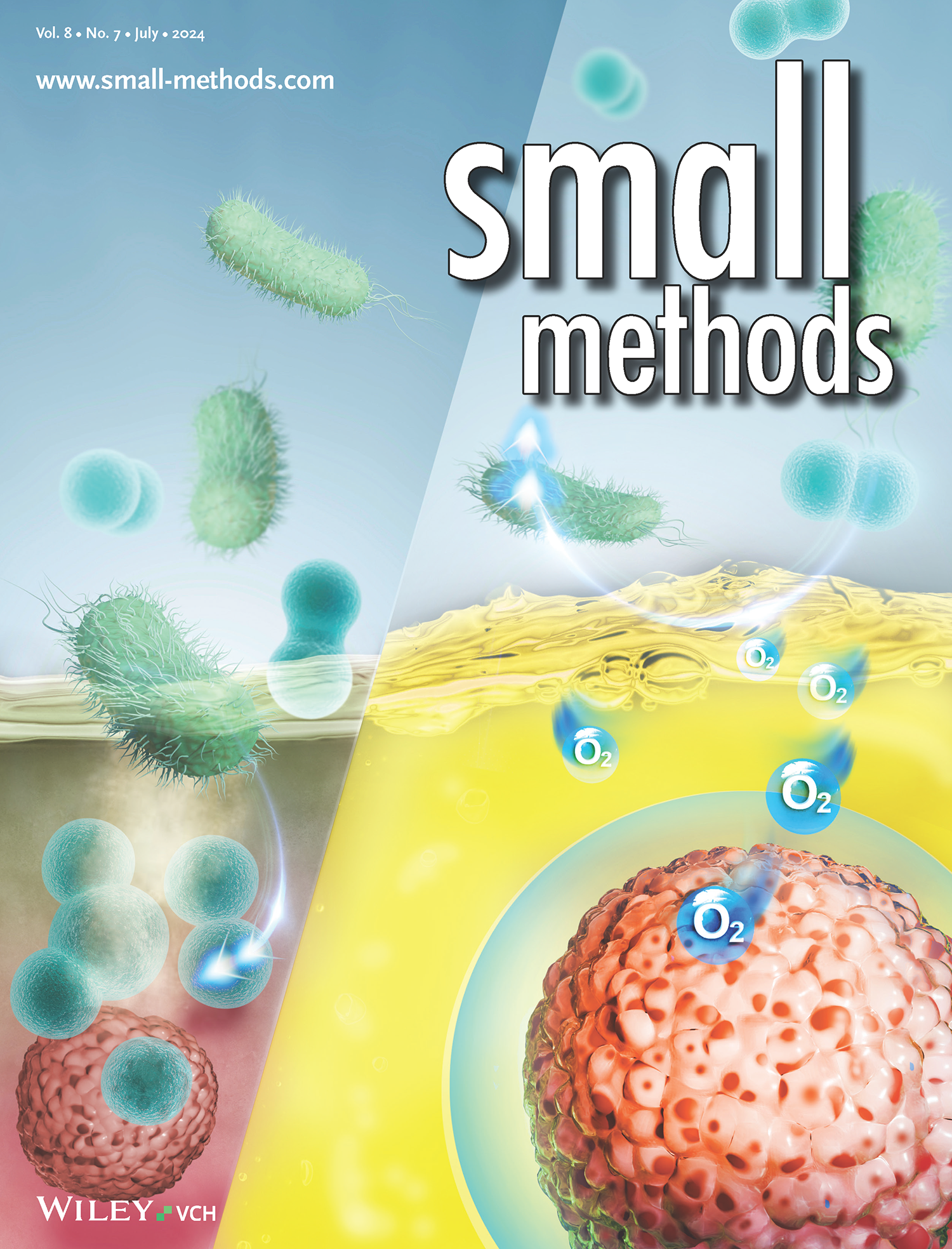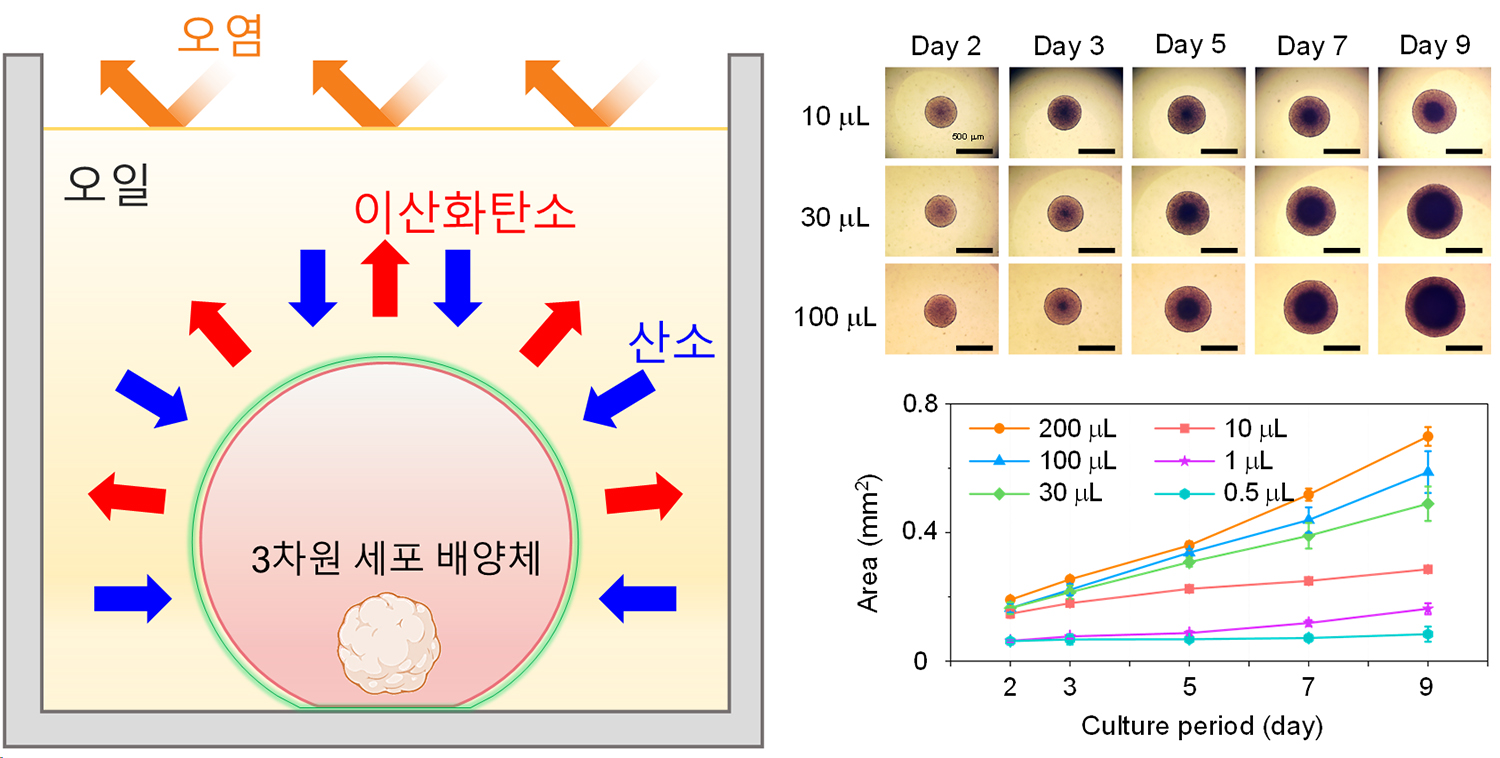커뮤니티
부경투데이
- 국립 부경대학교의 다양한 모습과 소식을 접하시면 부경대학교가 한번 더 가까워집니다.
| 국제 학술지 <Small Methods>에 실렸다(Published in the International Journal <Small Methods>) | |||
| 작성자 | 대외협력과 | 작성일 | 2024-08-02 |
| 조회수 | 3282 | ||
| 국제 학술지 <Small Methods>에 실렸다(Published in the International Journal <Small Methods>) | |||||
 |
대외협력과 |  |
2024-08-02 |  |
3282 |
국립부경대 임도진 교수 연구팀, 국제학술지 표지논문 게재
- 오일 내 액적 3차원 세포 배양 신기술 개발… 국제 학술지 《Small Methods》

국립부경대학교 임도진 교수(화학공학과) 연구팀의 논문이 국제 학술지 《Small Methods(IF 10.7)》 표지 논문으로 실렸다.
이 학술지 최근호 표지로 실린 논문 제목은 ‘3D Cell Culture Method in Channel-Free Water-in-Oil Droplets’이다.
임도진 교수 연구팀은 이 논문에서 인공 장기 모델인 오가노이드(organoid)의 배양을 위해 채널(통로)을 사용하지 않는 새로운 오일 내 액적 3차원 세포 배양 기술을 개발해 제시했다.
오가노이드는 인공적으로 만든 장기 모델로, 동물 실험을 대체할 수 있는 새로운 전임상 모델로 미래의 ‘재생의학의 게임 체인저’로 불리며 주목받고 있다.
하지만 배양시스템의 크기에 의해 결정되는 3차원 세포 배양체 크기 제한으로 오가노이드 배양에서는 순차적으로 배양시스템을 바꿔주는 번거롭고 복잡한 과정이 필수적이라는 한계가 있다.
연구팀은 이 같은 문제의 해결을 위해 채널을 사용하지 않는 액적(아주 작고 둥근 물방울) 3차원 세포 배양 신기술을 이용해 쉽고 간단한 시스템의 구성으로 다양한 크기 3차원 세포 배양체를 형성하는 성과를 얻었다.
이번 연구 논문의 제1 저자인 배서준 박사과정생은 10,000개 이상의 스페로이드 사진을 체계적으로 분석해 액적 크기의 조절을 통해 형성되는 스페로이드의 크기를 결정할 수 있다는 것을 발견했다.
그는 “채널을 사용하지 않은 오일 내 액적 3차원 세포 배양 기술은 액적의 조작에 우수성을 가지는 디지털 미세유체 기술과 결합해 오가노이드 자동화 배양시스템의 개발에 도움이 될 것으로 기대한다.”라고 밝혔다.
임도진 교수 연구팀은 한국연구재단의 중견연구자 지원사업의 지원을 받아 이번 연구를 수행했다. <부경투데이>

△ 오일 내 액적 환경에서의 3차원 세포 배양 기술의 특징과 액적 크기에 따른 스페로이드 크기 변화 이미지.
Professor Lim Do-jin's Research Team at Pukyong National University Published Cover Paper in International Journal
- Development of a New Technology for Droplet 3D Cell Culture in Oil… Published in the International Journal 《Small Methods》
The paper by Professor Lim Do-jin’s research team from Pukyong National University (Department of Chemical Engineering) was published as the cover article in the international journal 《Small Methods (IF 10.7)》.
The title of the paper published as the cover article in the latest issue of this journal is ‘3D Cell Culture Method in Channel-Free Water-in-Oil Droplets.’
In this paper, Professor Lim Do-jin’s research team developed and presented a novel droplet-based 3D cell culture technology in oil that does not use channels (passages) for the cultivation of organoids, which are models of artificial organs.
Organoids are artificially created organ models that are gaining attention as a new preclinical model capable of replacing animal experiments, often referred to as the ’game changer of regenerative medicine‘ in the future.
However, due to the size limitations of 3D cell cultures determined by the size of the culture system, there is a limitation in organoid cultivation that necessitates a cumbersome and complex process of sequentially changing the culture system.
To address this issue, the research team achieved the formation of various sizes of 3D cell cultures through a simple system configuration using a novel droplet (a very small, round drop) 3D cell culture technology that does not utilize channels.
The first author of this research paper, Ph.D. student Bae Seo-jun, systematically analyzed over 10,000 spheroid images and discovered that the size of spheroids formed can be determined by controlling the droplet size.
He stated, “The droplet-based 3D cell culture technology in oil that does not use channels, combined with digital microfluidics that excels in droplet manipulation, is expected to aid in the development of automated organoid culture systems.”
Professor Lim Do-jin’s research team conducted this study with the support of the Mid-Career Researcher Support Project from the National Research Foundation of Korea. <Pukyong Today>